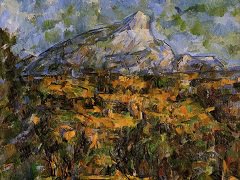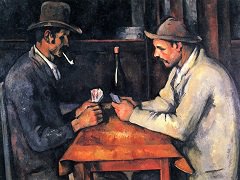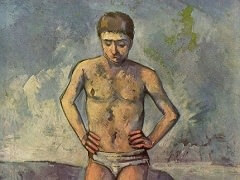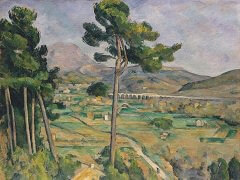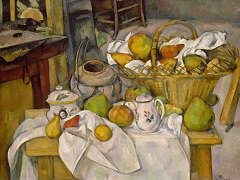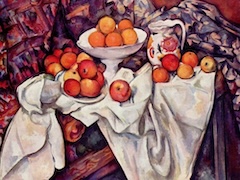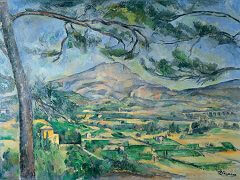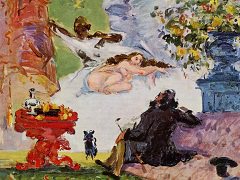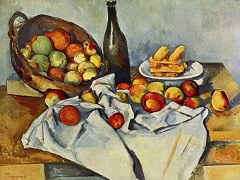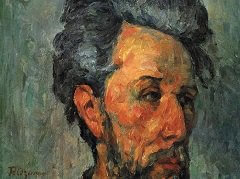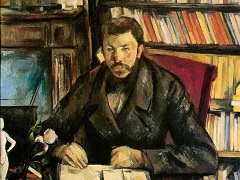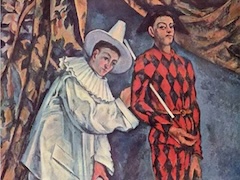Young Italian Girl Resting on Her Elbow, 1889 - by Paul Cezanne
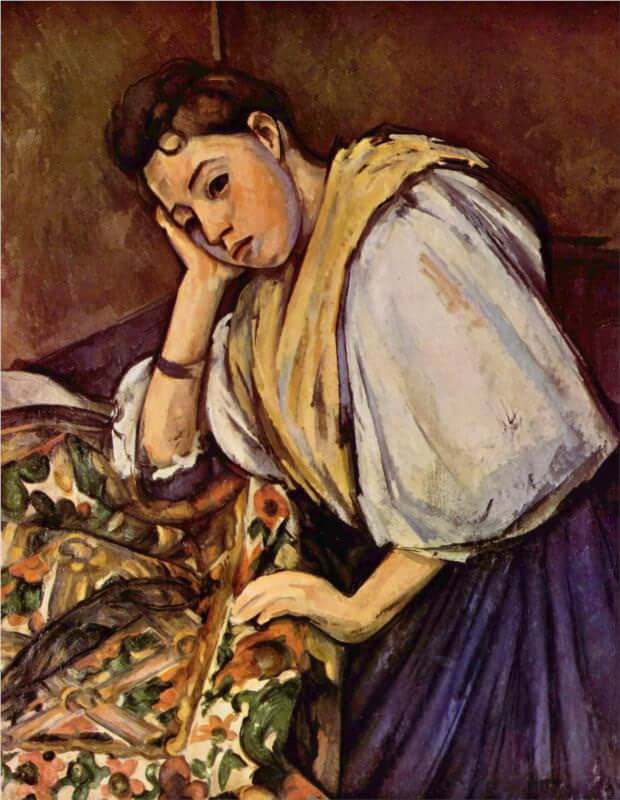
In this painting, the whole is treated with a breadth that recalls the great Venetian portraits of the Renaissance. The forms are amazingly substantial and well-defined. The bent figure fills her space grandly.
It is a powerfully constructed work, compact and clear, with parts beautifully fitted to each other and to the canvas surface. The tilted mass of the upper body (with right angle at the elbow) is opposed to the rectangular masses of the skirt and drape; yet the vertical and horizontal rarely come to view, and then only in short segments (as in the bracelet and the wall) or as parts of more complex lines. The most stable masses are covered with lines and spots of unarchitectural quality - diagonal, crossed, or curved on the draped table, convergent on the skirt - a typical device of Cezanne's later art by which the severity of construction is softened and opposed qualities are interjoined.
The color is rich, grave, and strong. The simplicity of the large aspect conceals at first the variety of the color relationships that have been employed. The dark blue of the skirt has a different kind of contrast with each of the large areas of color. Its darkness or low value is opposed to the white; its coolness, to the warm complementaries of yellow and orange in the face; its uniformity or evenness, to the mottled color of the drape; its purity, to the mixed, neutralized brown of the wall. At the same time, the blue mass is harmonized with all these distinct, opposed fields: its convergent stripes reappear in the white sleeve, which is also toned with blue and grey; dark blue lines mark the contours at the face and features and right arm, and there is blue, grey, and black in the fichu; it is tied to the wall, not only through vague green and purple tints within the brown and through the lines of the wall and dado at the left, but through the dark key - there is a progression from the skirt to the purplish dado to the upper wall; and last, the blue area is related to the tablecloth through its similar position and shape, and also through the analogy of lines. Touches of red and green bind the face to the decoration of the drape.


